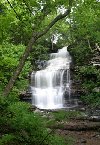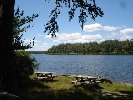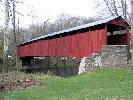
Rickett's Glen Falls

Lake Jean |
Rickett's Glen State Park
This area is a favorite hiking location of the Grand Admiral and his family. Ricketts Glen harbors Glens Natural Area, a National Natural Landmark. The Glens boasts a series of wild, free-flowing waterfalls, each cascading through rock-strewn clefts in this ancient hillside. The 94-foot Ganoga Falls is the highest of 22 named waterfalls. Old growth timber and diverse wildlife add to the scenic area. Ricketts Glen State Park is one of the most scenic areas in Pennsylvania. This large park is comprised of 13,050 acres in Luzerne, Sullivan and Columbia counties. Lake Jean is a secluded location within Rickett's Glen State Park. It will be a primary location for future naval exercises.
|













